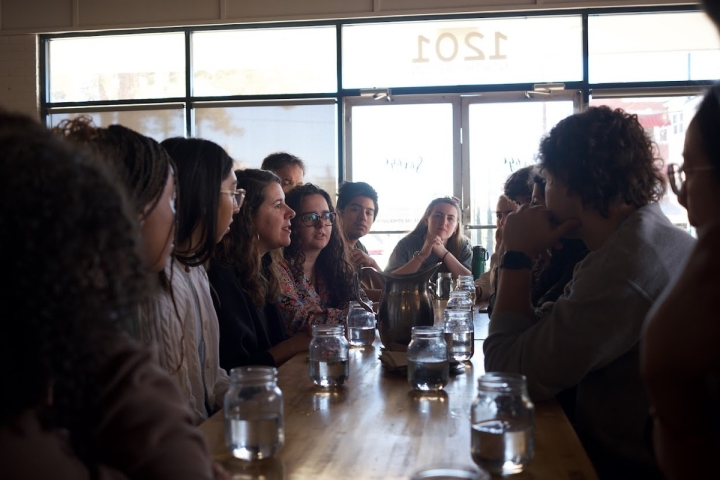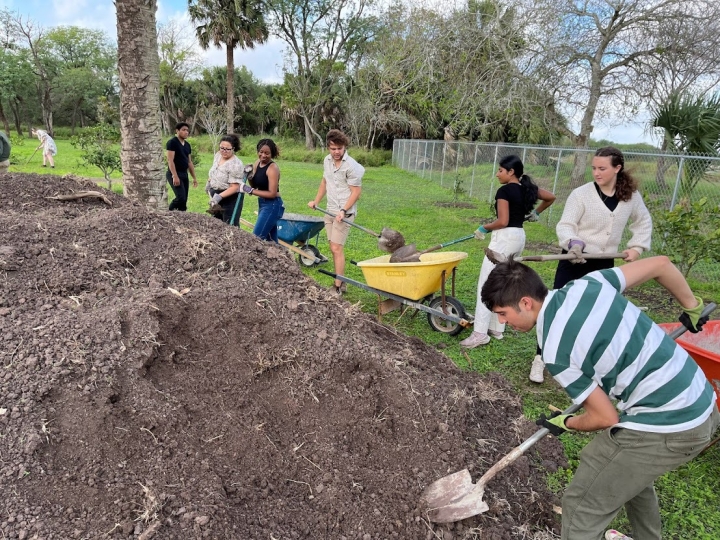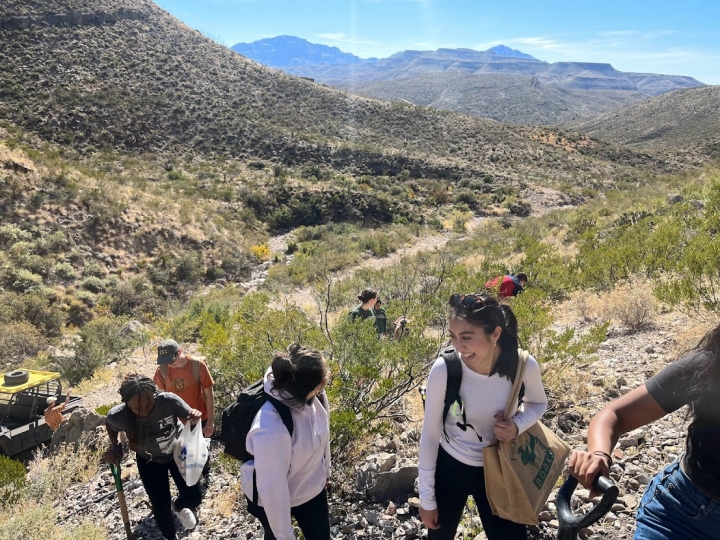At the end of fall term, the Dartmouth Center for Social Impact arranged for 13 students and two staff members to spend 10 days exploring the U.S. southern border in Texas, from El Paso to Brownsville.
Along the way, they learned about migration and asylum-seeking through myriad intersecting lenses: race, LGBTQIA+ identities, environmental conservation, geography, community organizing, indigeneity, public health, gentrification, democracy, religion, and activist art.
The winterim project was designed to meet learning objectives common to all DCSI immersion trips, says Associate Director Ashley Doolittle.
“Students take a deep dive into a complex social issue—in this case, immigration on the Texas-Mexico border—from a variety of vantage points. Through pre-departure workshops and on-the-ground interviews, diverse stakeholders help the travelers see the impacts of social issues. They apply this learning in real time, and bring back their newly acquired knowledge to campus, enhancing their Dartmouth experience in many ways,” she says.
Beginning in El Paso, students met with leaders of the Border Network for Human Rights and an award-winning immigration photographer. In Marfa, they got a taste of the art-as-activism scene, visited historic markers related to immigration turning points across time, and explored the impact of immigration on conservation by stargazing at Big Bend National Park.

Next stop: Presidio, home of Native burial sites. In Laredo, there was a storytelling and media action workshop. Highlights near McAllen included the National Butterfly Center and the South Texas Pro Bono Asylum Project. Harlingen featured visits to La Posada Providencia Relief Center, Harlingen Immigration Court, and Team Brownsville, which provides support for asylum seekers.
“We all went on this trip with lots of questions about the Texas-Mexico border,” says Dayanara Acuna ’23. “One thing that stood out for me was the difference between the way the media covers border issues and what we saw on the ground.”
But while local residents crisscross the border with relative ease for shopping or employment, immigrants, Acuna learned, may face problems. In El Paso, with workers from the Border Network for Human Rights, students stationed themselves on bridges, offering resources about legal rights and documenting the varied border-crossing experiences of migrants.
Acuna’s parents were born in Mexico and the family now lives in Connecticut. With a major in Latin American, Latino, and Caribbean studies, she says the DCSI trip deepened her resolve to become an immigration lawyer.
Another student in the project, Kiosha Fowlkes ’25, who has a double major in sociology and Spanish, shares that ambition.
“I visited the immigration court in Harlingen and that provided a lot of perspective for me,” she says. “Immigration law is definitely at the top of my list now because of seeing … how much help you can really do.”

Before they started the trip at the end of November, the students researched and discussed social issues affecting border communities by attending workshops with social sector organizations across the country and expert faculty here at Dartmouth including Professor of Geography Richard Wright; N. Bruce Duthu, the Samson Occom Professor of Native and Indigenous Studies; and with consulting feedback from Jorge Cuéllar, assistant professor of Latin American, Latino, and Caribbean Studies.
But there’s a difference between reading about life in this region and observing it firsthand, says DCSI Program Coordinator Katelyn Zeser ’22, who accompanied the students.
“Even when we were all feeling the weight of the subjects we were discussing, students met our community partners and each other with a level of thoughtfulness and depth that made me proud,” Zeser says. “Moments of synthesis and insight were sprinkled throughout the trip, as students made meaningful connections between themselves, their families, and life along the border.”
